Explore the beauty of Lake Akan and Lake Mashu and learn about rich cultural heritage and history of the Ainu people.

Join me on part two of my two-day trip across East Hokkaido, where we’ll discover the wonders of Lake Akan, Lake Kussharo, and Lake Mashu.
On my first day at Akan Mashu National Park, I made the most of some bad weather by touring Lake Kussharo, relaxing in some onsens, and feasting on local Akan food at the hotel. If you missed out on the first part, you can catch up here!
For my second and final day in Akan, I was greeted with amazing weather. I toured the three lakes—Akan, Kussharo, and Mashu—while taking in the stunning scenery. I’ll also delve into the history and culture of the Ainu, the indigenous people of Japan, and get up close with Akan’s famous marimo algae! With another day filled with adventure (and driving) ahead, let’s dive right in!

Table of Contents
Lake Akan Cruise
After checking out and saying goodbye to the hotel, I made my way to the Lake Akan area. The lake is situated within the Akan Caldera, which was formed by the collapse of land following volcanic eruptions thousands of years ago.

On the shores of Lake Akan lies Akanko Onsen, a small town filled with hotels, hot springs, and restaurants. You can also find the Akankohan Eco-museum Center, where you can discover information about bubbling mud pools known as “bokke” and the park’s unique flora and fauna. As the weather was sunny, I decided to go for the sightseeing cruise. The cruise cost 2,000 yen (13 USD) for adults and 1,040 yen (7 USD) for children (in 2023).
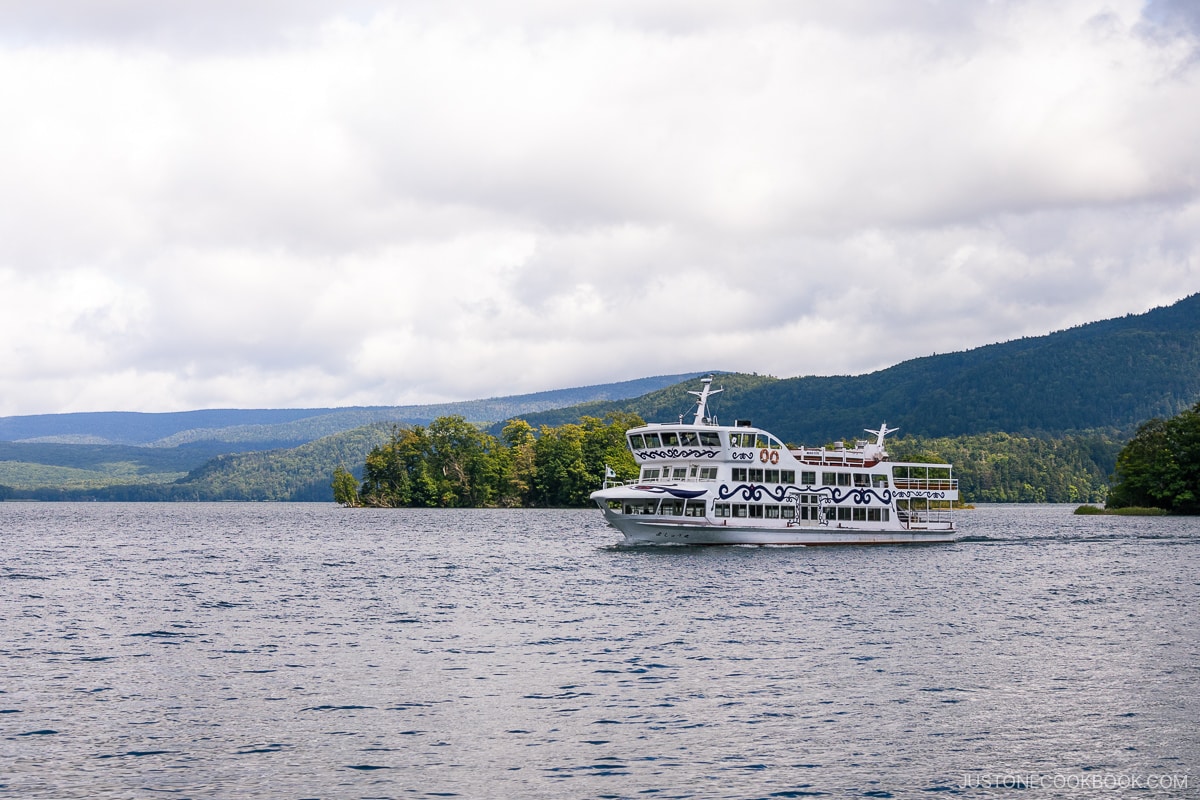
The 85-minute cruise takes you around the Akan caldera. Passing through the picturesque Takiguchi area and stopping at Churui Island, where you can observe the famous marimo algae up close.

The boat provides both indoor and outdoor seating and has vending machines so you can grab a drink while enjoying the scenery.

You can appreciate the beautiful nature up close, and it changes with the seasons.
On clear days, you can witness the active volcanoes, Mount Meakan and Mount Oakan, towering over the lake. Both volcanoes erupted in 2008, but the eruptions were not severe and should not deter you from visiting the park.
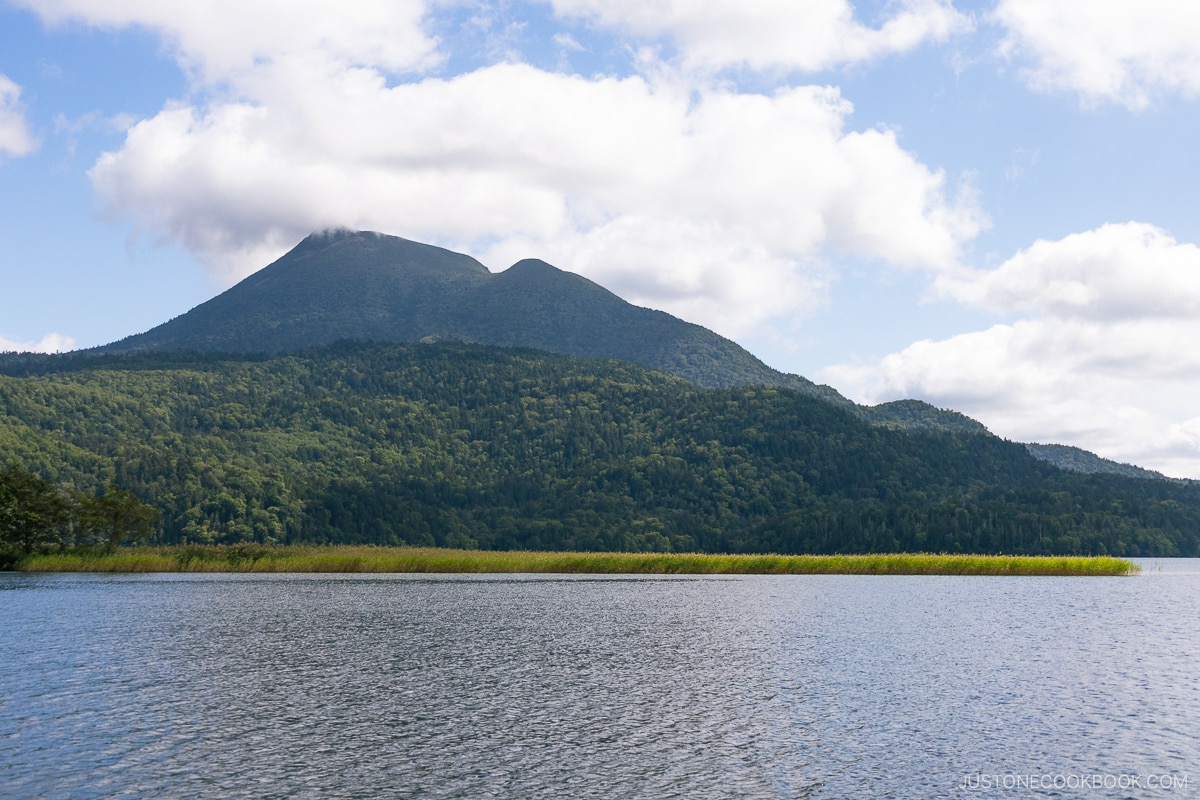

Towards the end of the cruise, you’ll have a 15-minute stop at the Marimo Exhibition Center, where you can learn all about the spherical algae, Marimo.
Marimo Algea
The bottom of Lake Akan is inhabited by marimo, which often grows up to 20 to 30 centimeters in size. Historically, people used to collect marimo from the lake, posing a threat to its existence. In 1920, it became a protected species, and in 1940, a campaign was launched to safeguard the algae. In 1950, the local Ainu people initiated a three-day marimo festival, culminating in a ritual where a senior Ainu, aboard a small wooden boat, returns the marimo one by one to the lake with care and gratitude. This festival continues today, typically held in October as the autumn leaves begin to fall.
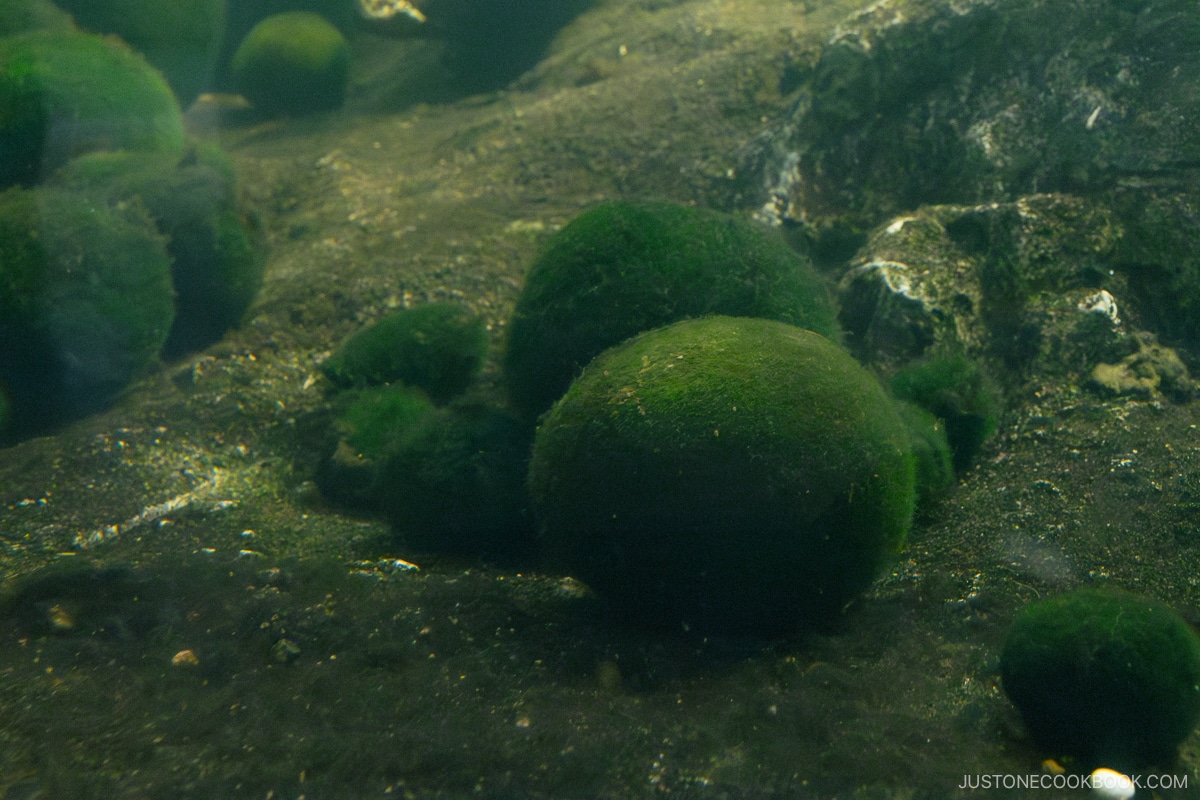

In any case, the cruise offers a 15-minute stop at the Marimo Exhibition Center for you to learn more about the algae and take some pictures.

Lake Akan Ainu Kotan
Near the sightseeing cruise, you’ll find Ainu Kotan, a small village with around 120 Ainu settlers from 36 families. Visitors can explore the various shops selling handmade goods, learn about Ainu culture, and dine at traditional restaurants. Upon arrival, you’ll immediately notice traditional music and unique architecture, transporting you to the world of the Ainu.




Traditional Ainu Food
I stopped by Marukibune to get some lunch. Here, they offer soup curry, and ramen, but what caught my eye was the traditional Ainu food.

I decided on the Yasei Don (venison rice bowl), priced at 2,200 yen (15 USD). Venison has a long history in Hokkaido’s cuisine and held particular importance in Ainu history, as deer served as one of their main sources of food and fur for clothing. The donburi consisted of tender venison, vegetables, and egg, creating a delicious combination. The venison was incredibly tender, the vegetables provided a slight crunch, and the egg added richness and luxury to the dish. The best way to describe it is a blend of oyakodon and gyudon.

Traditional Ainu Craft
Throughout the kotan, you’ll find various stores with master artisans selling intricate wood carvings of bears, birds, humans, and other subjects. These pieces are highly sought after around the world as original Ainu art.

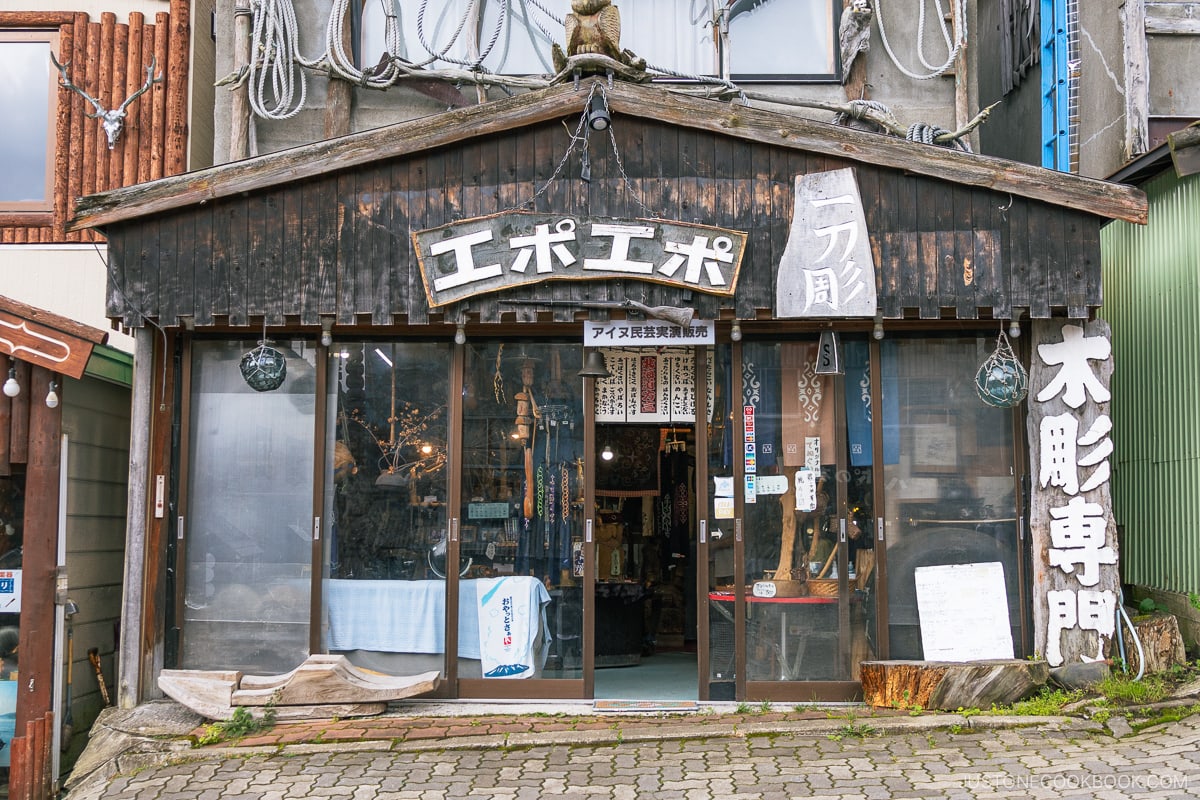
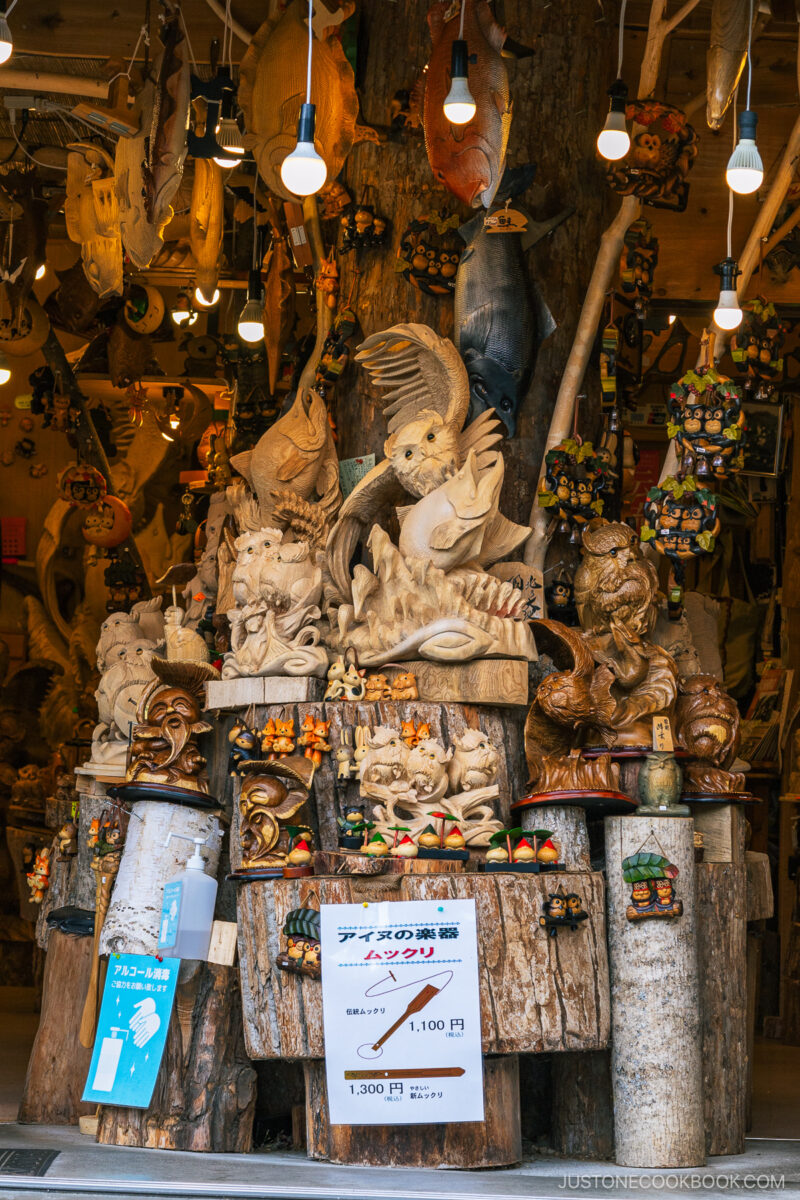
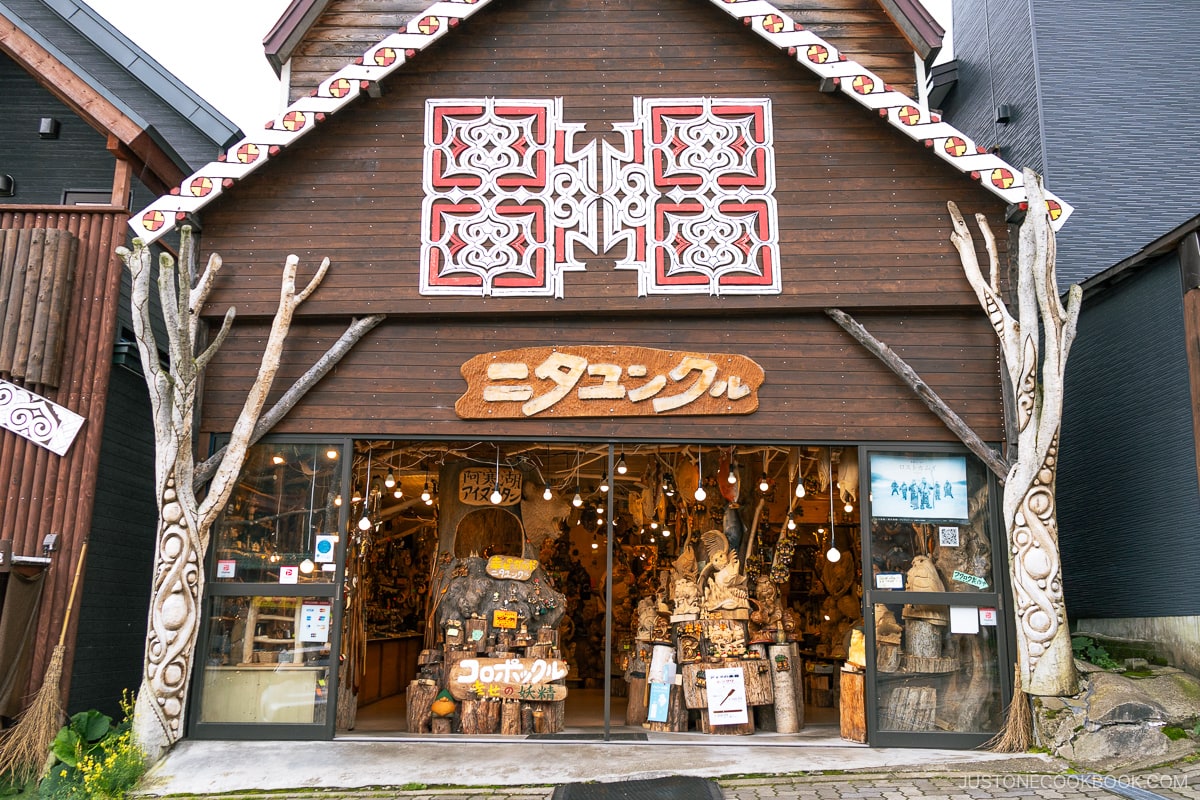
To gain further insight into the world of Ainu, you can also watch a traditional Ainu dance, which is Hokkaido’s only designated important intangible cultural heritage of Japan. At Ainu Theater Ikor, you can watch a 30-minute performance of traditional dances, music, and folklore stories.
The performance is only available in Japanese, and the entrance fee is 1,500 yen for adults and 700 yen (5 USD) for children.
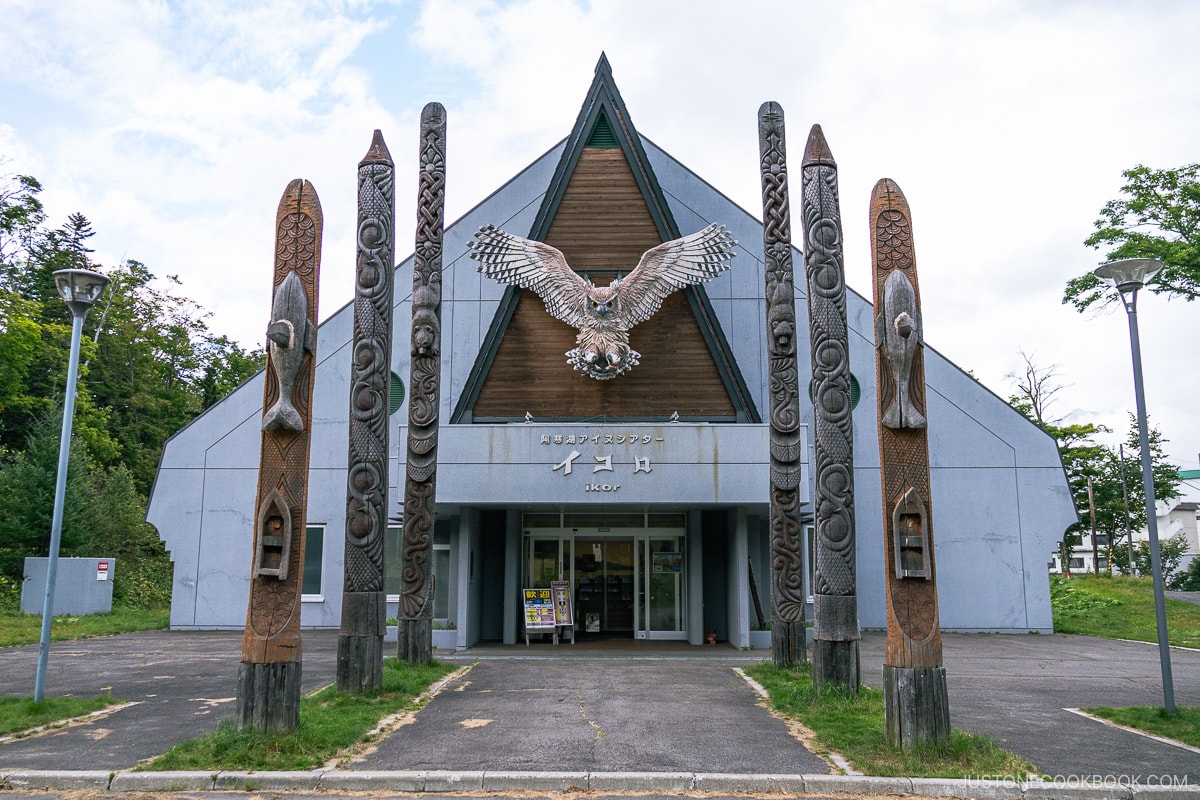
Alternatively, you can attend the Lost Kamuy performance, which tells the story of the Ainu people and the Hokkaido wolf using dance and digital art. The entrance fee is 2,200 yen (14 USD) for adults and 700 yen (5 USD) for children.
Ainu Living Memorial Hall Poncise
You can also experience the life of the Ainu by visiting the Ainu Living Memorial Hall Poncise, a small thatched-roof house. The house displays artifacts, clothing, and everyday items that provide insight into ancient times, offering a sense of how the indigenous people lived.


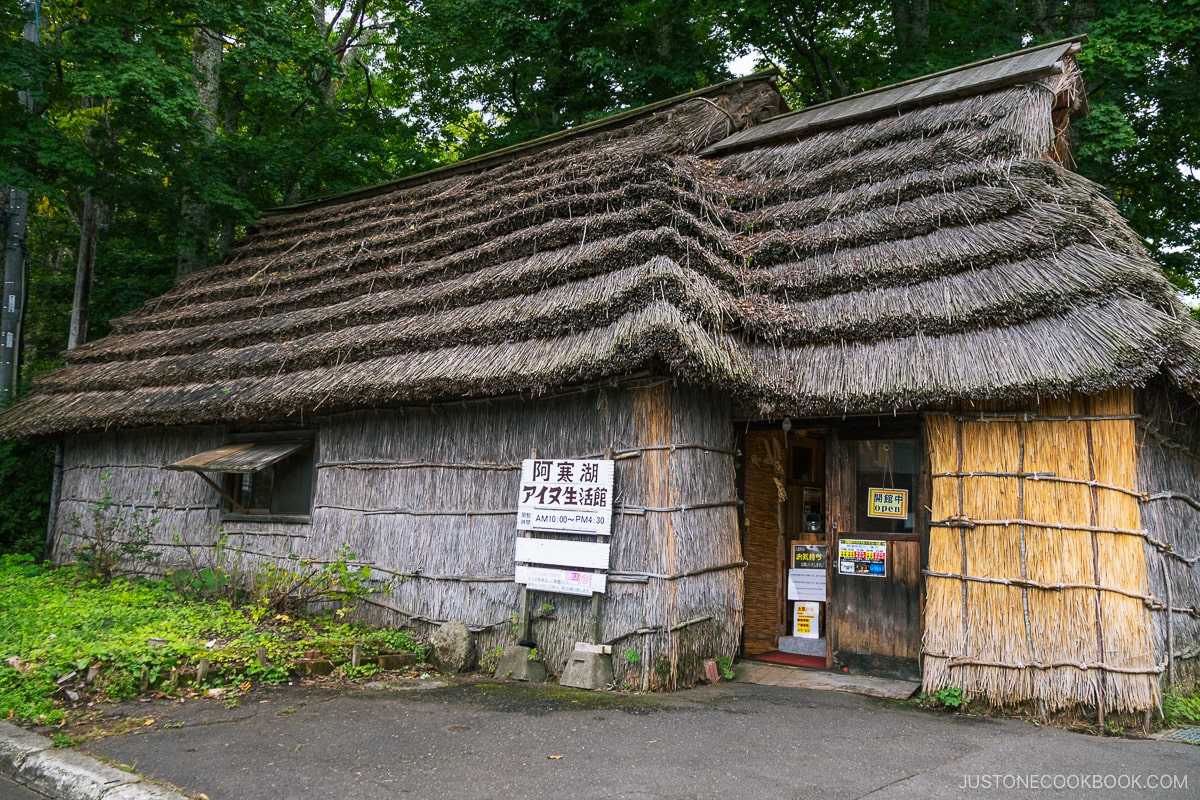

Bihoro Pass
As the clouds disappeared, I made my way up to Bihoro Pass next to Lake Kussharo. The drive took just over an hour, with the winding roads slowly ascending the mountains, which were filled with bikers and other travelers looking to get a glimpse of the spectacular scenery.

From the observatory at Bihoro Pass, you’re greeted with a panoramic view of Kussharo Caldera, which is the largest caldera lake in Japan.
I recommend taking a hike to the top of the observatory to get the best view of the surrounding landscape.

From this vantage point, you can see the lake’s central island, Nakajima, Wakoto Peninsula, which we briefly visited in the previous post, and all of the surrounding nature at the park.



The observatory also has a rest house with various restaurants and shops.

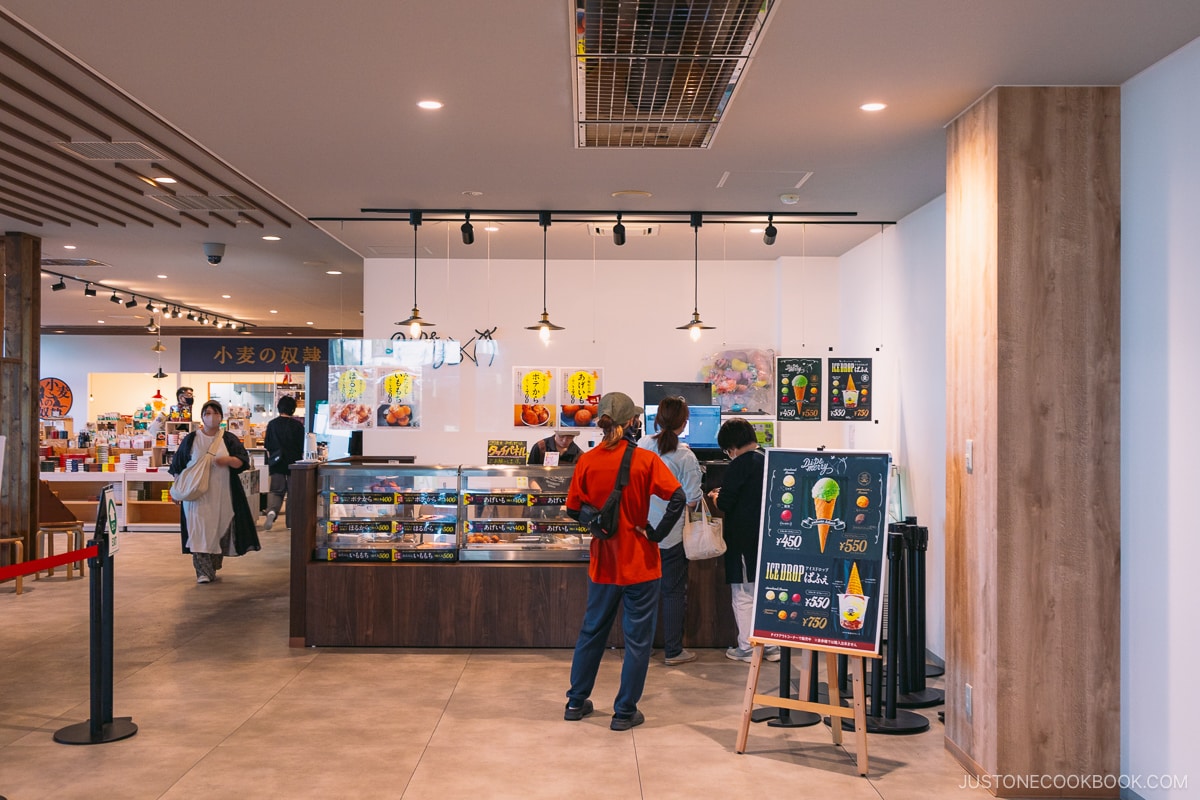


During my visit, I sampled the popular ageimo (deep-fried potato) and enjoyed some customary ice cream. This time, it wasn’t soft-serve; it was ice cream flavored with Kuma bamboo grass!


For all the early birds out there, if you visit between June and October and the conditions are right, you might also be fortunate enough to witness a sea of clouds in the early morning.
Lake Mashu
The last stop of my two-day trip was Lake Mashu, which was approximately a 40-minute drive from Bihoro Pass.
There are several different observatories around Lake Mashu Caldera, but I began with Lake Mashu Observatory No.1.

Here, you can purchase gifts at the souvenir shop or stop for a snack and some coffee.
If you climb the stairs, you’ll reach an observation deck where you can sit and relax while taking in the view of the lake.


To the right, you’ll be able to see Mount Kamui, which is said to be an active volcano. Not to worry, though, as it hasn’t erupted in the last 1,000 years.

After some relaxation, I made my way to Observatory No.3, just a few minutes by car. It was just time for sunset and it was by far, one of the most beautiful I had seen.
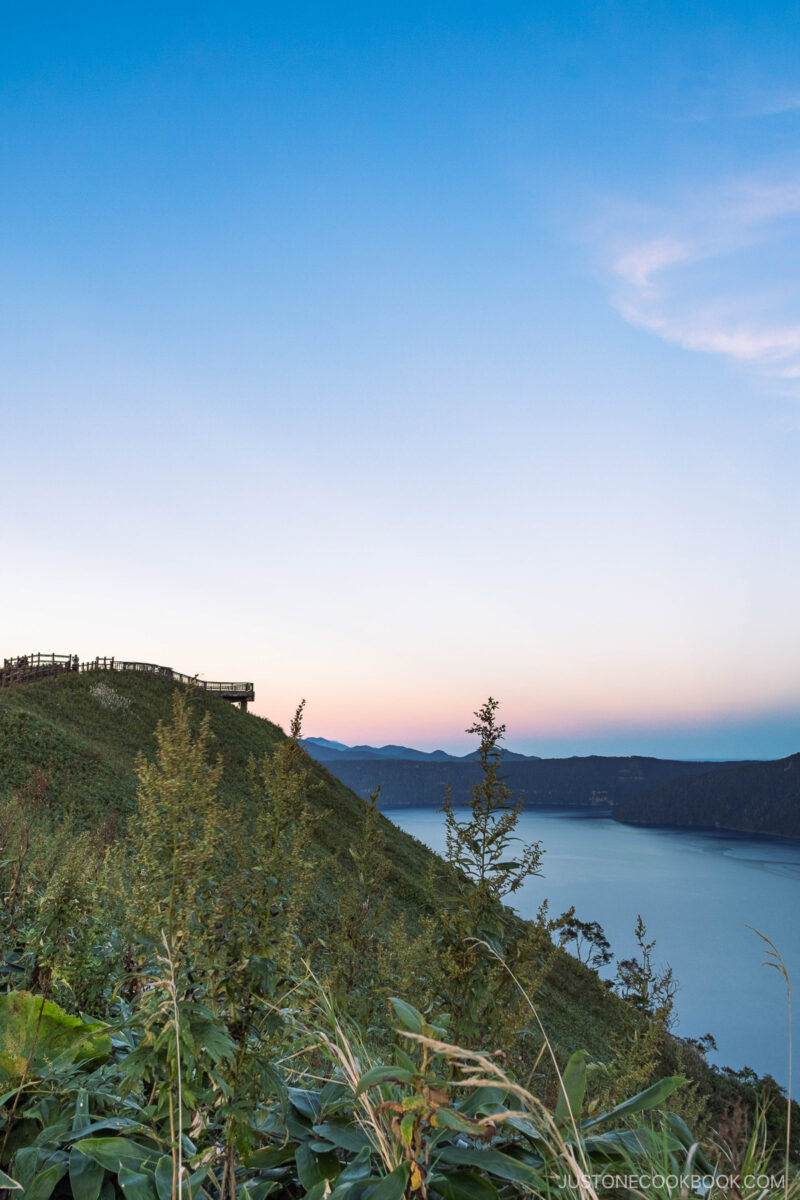

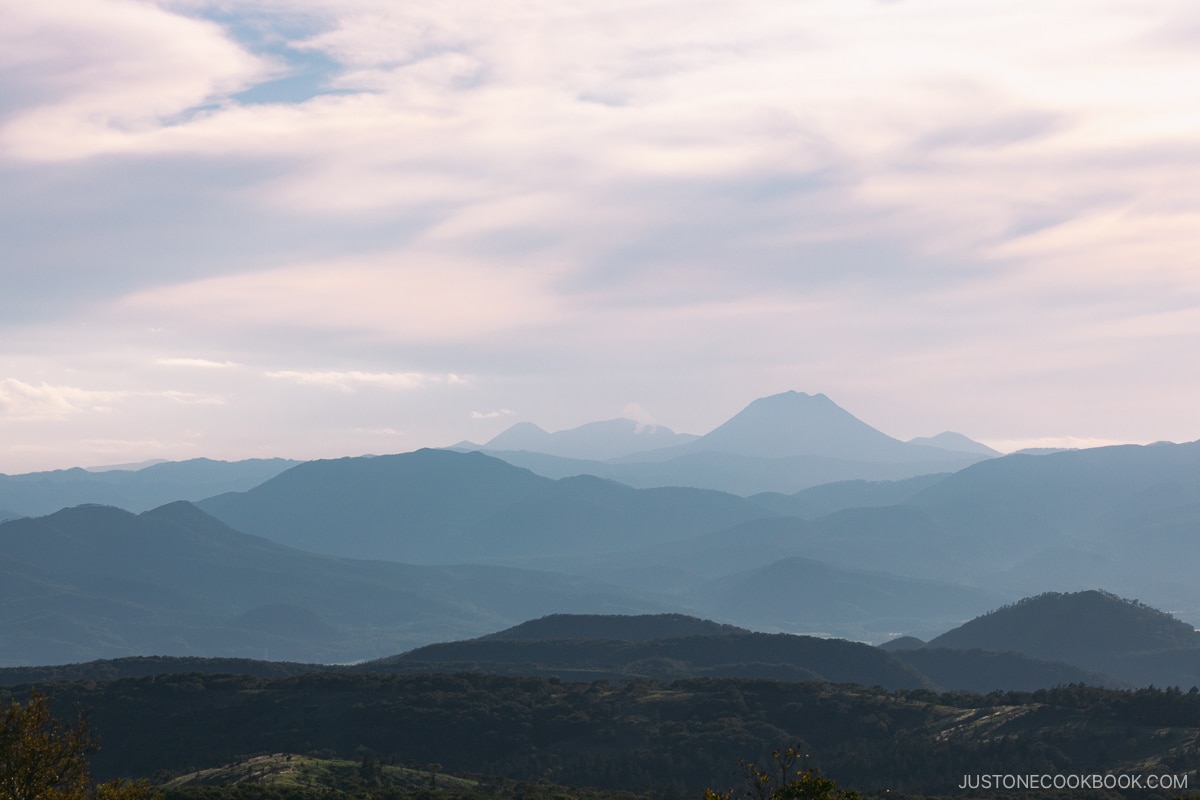
In the distance, you can view the entirety of Akan Mashu National Park, with Iozan (Mt. Ito) and its steaming volcanic vents, known as fumaroles.
You’ll notice that the sides of the volcanoes are stained white due to the billowing sulfur.


It couldn’t have been a better way to conclude the trip, and it reminded me why I love Hokkaido so much. The eastern side is often overlooked by visitors, so I hope this inspires you to explore it when you’re in Japan!
So, that was my two-day adventure around Akan Mashu National Park! What did you think? While I managed to travel all around the park in just two days, there is so much more to explore. For those who love the outdoors, there are countless hiking trails around the mountains (but be careful of wild brown bears), and many more observatories.
The warmer months are great for enjoying the luscious greenery, while the winter months turn the park into a wonderland, filled with snow-capped mountains and whooper swans. No matter the time of year, Akan Mashu National Park is worth a visit!










